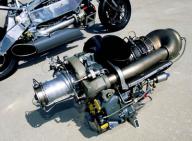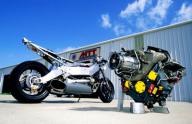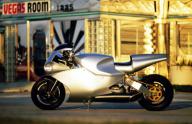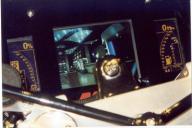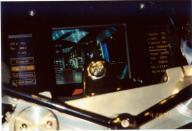-
Număr conținut
1.481 -
Înregistrat
-
Ultima Vizită
Tip conținut
Profiluri
Forumuri
Calendar
Orice postat de bhairava
- Anterioară
- 1
- 2
- 3
- 4
- 5
- 6
- 7
- 8
- 9
- Următoarea
-
Pagina 4 din 25
-
trist. daca faceti totusi clubul, intru si eu.
-
"If I was not a Hells Angel I would probably be riding an ST1100, a BMW or a Triumph." http://www.bikerworld.co.uk/xBarger/
-
ai fost la vova la service ? din cite stiu mecanicul de acolo e foarte serios.
-
By survey 100% of over 10,000 riders agree on this point: they know that if they possessed the ability and skill to get their turn entry speeds consistently right, their confidence would soar; they would feel more in control; they would be faster and they would be smoother. Here is some information on why you might want to master that ability. Coasting Races In the mid â70's I was introduced to an amazing form of âracingâ. Four or five of us would get together at the top of one of our favorite southern California canyon descents; turn off the engines; line up across the road; heckle each other; count to three; pick up our feet without pushing off any more than was necessary to get moving and laugh and yell out insults to one another all the way down to the bottom. Most of the runs were a couple of miles long with lots of turns. Thatâs a coasting race. The rider who coasted the farthest and fastest (they were usually the same rider) âwonâ. There werenât any tricks, equipment mattered little, it was all you. Well, I did have one little trick -- pushing the pads back into my front caliper to eliminate the pad drag. The camaraderie was elevated enormously by the fact that, unlike our usual canyon rides we could, for the most part, communicate throughout the descent. It was such a delight. Even when it went wrong and someone crashed (like me) I still have fond memories and get a warm sensation when recalling it. Strategy of Coasting Races On the technical side of things: I was immediately impressed with several aspects of this form of entertainment and a couple of those points were indelibly printed in my memory and became a part of the California Superbike School over 20 years ago. The simple trick to winning a coasting race is the obvious, the rider who could maintain his momentum by using his brakes the least generally would prevail. Doing an entire run down some of the steeper roads with little or no braking took as much or more mental grip than doing it with them, this becoming immediately apparent in the first semi-tight corner you came to. Unwilling to give up the momentum yet afraid of the speed which had accumulated, your focus and interest became laser sharp. Sure your hand would be poised over the lever and sure it took some supreme acts of willpower to keep from using brakes and sure you would make errors and have to use the brakes but you also paid closer attention to the speeds than you normally would. The reduction of distractions like engine noise and gear changes and throttle and charging the corners with hard braking were all eliminated and it allowed you to make much finer estimates of your corner entry speeds and maintain that precious momentum. Low Noise, High Speeds After my first coasting race I realized I never would have gone through those turns with the power on as fast as I had done with no engine running, no charging and, for the most part, no brakes. It made me realize just how distracting those things really were and just how much of my attention they absorbed. One of the things I have noticed when I watch students is how erratic their turn entry speeds often are. That comes from the idea they have to charge the corners and brake hard but they can tend to over-brake and foul up their entry and corner speed momentum. Low Speeds, Quick Times One day, as I was driving up to the Laguna Seca track in northern California to do a school, I realized that if anyone was going to overcome this self generated confusion from over-braking, the quickest route to that was riding no brakes. Once I got to the track I tried it out and rediscovered what Iâd already figured out before from the coasting races. I went faster into the turns, my speed sense and judgement became sharper, I worried less about my entry speed and found that getting back to the throttle earlier was significantly easier. I thought it would be worthwhile to have the students try it out. While it is true that some tracks lend themselves to this form of sharpening your riding skills better than others, I did begin to notice a trend at different tracks. The riders who stuck with the no brakes, even after we officially switched back to using them, made more improvement in their speed and confidence than those who were âtestingâ our brake pad material by charging the turns. Ignore the Instincts Itâs almost as if riders feel obligated to charge turns. Itâs the idea that you will go faster because of it and seems such a simple and direct route to that end but rarely works. The instinct to brake late and hard is like clubbing a female to then take her for a wife. That plan isnât going to work. I have observed many truly diligent riders who ignored the instinct and stayed with the No Brakes format knocking off seconds from their lap times. To top it off they were achieving their quicker times with only one or two gears instead of the usual thrashing through the gear box. They might be going 20 mph slower on the straights but one should pay attention to the results (improved lap times and corner speed) not the impulse to go fast on the straights. As I have said a thousand times, the brakes become more of a crutch than a tool for most riders. Someone always whines about the no-brakes riding format at school. Well, crutches are notoriously hard to put down, arenât they? Riders claim it is difficult (of course it is), that they could go faster with them (faster down the straight away, yes); that they âhadâ to use them (the crutch again) and on and on. What these riders donât realize is how satisfying it is to persevere at the exercise until you really get it, so you really can judge your entry speeds and really know you can do it. Very, very satisfying. Very, very big contribution to your riding confidence. Very! The Basic Idea The logic is flawless. Using or not using the brakes is irrelevant to the intended result of getting into the corner at the exact right speed. One either knows what that right speed is and can achieve it or they are guessing. If they are guessing they are paying more attention to it than they should have to. Guessing brings about inaccurate braking and inaccurate braking brings about rough and uncertain turn entries. Trail Braking (Definition: Action of trailing off or tapering off brake lever pressure and braking force as the rider enters the corner.) Trail braking is a valid and useful tool for any rider at any level of riding. The warning is this: when used too often, or as a crutch to calm the fear brought on by the inability to sense speeds accurately, it not only doesnât solve the source of the problem it makes it worse. As the pilot you must make the decision on when to let off of the brake(s). It is a complicated little piece of work with all of the other usual distractions you encounter at the turnâs entry, e.g., setting the lean, getting the line and feeling the traction. Bottom line â- if you are trailing the brakes towards a well known, accurately understood speed it is a tool. Otherwise it tends to become a crutch and invites riders to âchargeâ the turns, low line them, leave the throttle till late and make tricky and sometimes dangerous mid-corner steering corrections all of which could be avoided with accurate turn entry speed sensing and setting. Panic Crutch In contrast to the aforementioned, I see many riders who feel compelled to stab at their brakes in the last moments before entering a corner. While watching them do it, the only conclusion one would come to is that the speed was a big surprise; all of a sudden they become aware of it and it seemed too fast. This is an obvious error. They arenât using the brake to adjust anything except their fear. In either of the above cases, an accurate sense of speed opens the door to confidence. Results Then and Now The essence and final result of any brake release for cornering remains what I said in 1980 in my first Superbike School lecture and on page 64 of the first âA Twist of the Wristâ book in 1982: To set the speed of the bike correctly for that place on the track (or road) so that no further changes are necessary. In other words, you get it right. Not too fast, not too slow. Braking itself is an art within the art of cornering. Your sense-of-speed is the underlying resource you have to get it right. As an exercise, no brakes riding will help improve your sense-of-speed. Do no-brakes whenever you have the opportunity and see what happens to your sense of speed and see what happens to your riding. The best part is that once you have combined a good sense of speed with the other twelve basic skills of cornering it all begins to come together. It is truly one of the skills that allows you to discover the ART OF CORNERING. All the best, Keith
-
Warning: Before you read this article you should know that it will create more questions than it will answer. Consider yourself forewarned. Reality Check For the cornering enthusiast, there are at least 48 different aspects in riding a single corner. Riders observe, record and scrutinize these points, usually without being aware of doing it at all. A while back I started out with a list of 14 things riders monitor in turns. I never imagined it would become so extensive. During its development, I mainly used the list to help racers identify and clarify aspects of their riding skills. Now, weâre starting to use parts of it in our Level IV School sessions. Several interesting things have come to light while quizzing riders using these lists. 1. As expected, each rider relates to the 48 points on the list a little differently. 2. As above, it was discovered that awareness (on many of the points) was low or even subconscious. Many were lumped together with other points of riding and never before isolated as separate and individual aspects of cornering. 3. Once each point was discussed, clarified and understood the riders were then able to grade themselves on how well they felt they executed them. 4. Even professional riders had no names or even slang type racer-expressions for most of the points covered. As it turns out, there is great deal of awareness of a great many things while riding. These can be recalled once the riderâs attention is directed to them. Apparently, each of these points occupy some corner of a riderâs attentionâthey wouldnât know what they are otherwise. Even the absence of terms that describe these perceptions is valuable data. That fact brings us closer to understanding why some riders excel at the sport. The better the rider the easier time they have isolating and grasping the points. Their ability to translate them into real world actions showed me they were more aware of the points than other, less skilled riders. I see riders, and youâve seen it too, struggling with this lack of descriptive terminology all the time. Without the descriptive words what do we do? We use hand gestures and facial expressions when describing different riding situations! The Name Game What Iâm saying is that inherent in the problem of rider improvement is the lack of names for these often flimsy and fragile perceptions. If you donât have a name for a problem it makes it hard to discuss. If it canât easily be communicated it is difficult to solve. Example, if you canât easily communicate what the front-end feels like when you lose it (within an acceptable range) how would a rider recognize it when it happens? How would he know whether it meant an impending crash or if it was just good feedback on the traction limits from his front-end? You can say âI was pushing the front-end in turn_______.â, but where does his imagination take him if he hasnât done that? Unless you figure out a way for riders to easily experience this or develop the words to describe it, your communication on the subject would go nowhere. No matter how many hand gestures you make. This points directly to the heart of the matter of rider improvement and one of its major pitfalls; communicating what things feel like. Having a name for things helps. Short of having a good descriptive name for something there is the building of fundamental skills that keep the rider out of trouble and in control. That is what we do in our levels at the schools. Now we have another tool. The list of 48 has given us forward motion in helping to bridge the communication and experience gap. Categories and Solutions For 25 years Iâve been evaluating and re-evaluating the schoolâs curriculum; adding and subtracting things as we see fit. As this list started to shape up I began an inventory of what techniques we coach at CSS to see if the 48 points were covered. Our current arsenal of drills and exercises numbers around 20 so how could we be covering all of these points? At first I was a little deflated. However, as I looked closer it became apparent that the 48 points could be grouped into categories. Examples of the categories are: traction, lean angle, stability, speed, corner entry, corner exits and lines. Looking Deeper From the perspective of an educator you have to design something that communicates and that brings another interesting problem, itâs one of those âwhich came first the chicken or the eggâ things. Is the rider working the controls from the way the bike feels; making a mental decision before working the controls? Looking (with his eyes) then making a decision and then working the controls? Do we naturally take into account the lag-time between looking then feeling and then initiating control actions? Is the rider âahead of himselfâ; is he riding right in present time or slightly âbehindâ himself to make these decisions? Is this all guided by what he did the last time he made this or another turn like it? How often does he flip back and forth from one sequence of seeing and feeling what the bike is doing to another? See what I mean, a lot more questions than answers. Whatever approach you finally use must be based on a keen understanding of what the rider senses, how he uses it and a clear picture of which chain of events he uses leading up to controlling the bike. Try One You could ask, âIs it really so complicatedâ? Isnât there some simple way of going about sorting this out? Sure, once the categories are established, a few of which are listed above, then it does become somewhat simpler but beware, it also brings up more questions. Iâll take point number 27 from the list under the category of LINE so you can see what I mean. 27. Do you have Immediate Certainty on your Line?â This breaks down into several questions of its own: 1. Can you see and understand the exact line you are on right away after getting to your final leaned-over angle? 2. Do you have to wait a while to see if it is right or not? 3. Do you know itâs good sometimes before you even know that you know it is? Refinement Breaking this tiny portion of time down into its mini component parts can be done by referencing: 1. Time, how long does it take you? 2. Distance, what is the distance covered before you know? 3. Your attitude, how does it make you feel when you have to wait? 4. A description of visual data, what were you looking at? 5. The feel you get from the bike, was the bike stable or what? 6. Perception of speed, were you trying to decide if your speed would get you where you wanted or not? 7. Lean angle, could you tell if it needed changed or left alone? and 8. Traction, is your awareness of traction at this point too attention consuming? These are but a few possibilities of additional questions. But wait, thereâs even more. The answer to those bring about a whole other column of questions. Super Refinement Which of the above is more important than the others? Can Humans multi task--input and process--this much information? Do we monitor this sequentially or simultaneously? Do all riders do it in the same way? You can see the problems in working this out. But most importantly, the value of this line of questioning is rider improvement. To access this value you have to be able to rate yourself from 1 to 10 on point number 27. Can you do it? Go back and look it over. Tricks or Basics Sure the things that weâve developed over the past twenty-five years like the Lean and Slide Bike, the Panic Brake Trainer, the Control Trainer and our various video inventions are a big help in solving these areas. When we broke our school days into individual âdrillsâ in 1983, that was a major breakthrough in rider training all on its own. That was the beginning for me. I knew then that, luckily, there are simple answers. Unfortunately, it isnât just one technique that covers #27 of the list. Itâd be nice but itâs not so. What we have here is a very detailed process built on the true fundamentals of riding: throttle control, visual skills, traction sensitivity, ability to turn the bike accurately, rider input, speed setting and line recognition skills. All of these have to be in place for any rider to rate high on this Certainty of Line aspect of riding, # 27 above. Is anyone likely to get to be a 10 on this in even one corner on one day? Sure, its possible. Could anyone get it right for every corner on a given track in one day? Hmmm, havenât seen that happen. When mastered is it one of the parts of a riderâs confidence? Think it throughâif you could get point 27 on the list really right all the time, how would you feel? See answers below... The Benefits Here is a partial list of what you would have conquered: 1. You could see your line right away. This reduces the tendency to target fix. 2. You wouldnât be sitting on the bike waiting while you search for the answer to âwhere am I going in this turnâ. Perhaps the most important question a rider can have. 3. No doubts about when the gas should go back on. Being able to achieve throttle- induced stability earlier in the turn is always a plus. 4. Total certainty on any steering corrections you might have to make. This dramatically improves timing the steering inputs to be most effective. 5. A solid idea of where the bike is going to wind up at apex and the exit. Having good prediction on this always inspires confidence. 6. Huge reduction in rider tension on the bike. You donât have to be wound-up about steering inputs you imagine you âmightâ have to make. How valuable would the above six points be to you? OK, there are 47 more points, let me know when you are ready to start (or continue) working them out; weâve got over 100 school days in 12 countries in 2005 to handle it. Keith Code
-
clubu e misto, pacat ca e digeiu de qaqat. @wizzie: lasa-ne tata ca ne plictisesti.
-
a condus minsk, deci tot aia....
-
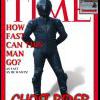
Hayabusa cu 3 roţi (dar nu trike)
topic a răspuns lui bhairava în UncleFesterul Motociclete de viteza
nu vreau sa ma gindesc cum ia curbele... -
criticile mele: 1. ucmr a tinut cont de cursele din campionatul national ? mi se pare o idee buna sa se plieze in jurul lor, sint destule saptamini in an, si e stupid sa dai de ales oamenilor intre o cursa si o intrunire. (nu mai vorbesc de tampenia de a organiza 2 intruniri in aceeasi data, asta e evidenta pentru toata lumea - poate cu exceptia celor 2 organizatori). 2. mi se pare stupida absenta unei intruniri de 1 mai la mare, avind in vedere ca oricum merem toti acolo. nu inteleg de ce e constanta pe 17-19 iunie...
-

carte tehnica pt. cbr 600 f
topic a răspuns lui bhairava în lupusorul Service si intretinere curenta
pe e-donkey. -

Intrebare despre HONDA nsr
topic a răspuns lui bhairava în doctorooul Service si intretinere curenta
ia-ti de 125, nu te tiganii. n-are rost sa mergi pe o chestie facuta din cirpeli. -
insanatosire grabnica mah... fa-te bine repede.
-
insanatosire grabnica Axa, si la vaca aia de sofer...
-
s-a aprins orezul in tine inutil. faptul ca ai brembou si prieli nu inseamna ca frinarea prin blocarea succesiva a rotii nu e mai eficienta ca stoppie, si nici ca nu se poate face. incearca sa n-o mai iei personal (vezi circu cu provocarile and stuff), eu incercam doar sa identific ce ai gresit, daca ai gresit. evident ca nu stiu ce s-a intimplat exact pt ca nu am fost acolo, dar decizia de a da un motor peste cap mi se pare extrem de reprobabila. whatever. peace.
-
nu stiu exact cum s-a intimplat, dar din ce zici, imi dau seama de 2 chestii care n-au mers ca lumea: 1. de ce n-a fost ocolita masina ? niciodata nu se pune frina cit se poate, cu ochii beliti la obstacol. pentru ca poate opreste, poate nu opreste. se pune frina calm, usor, si se are in vedere eliberarea ei pentru ocolire... 2. cum sa faca ma motocicleta stoppie ? si cu pasager pe de-asupra ??? e a nu stiu cita oara cind aud asta. o motocicleta pe care se frineaza corect, NU FACE STOPPIE, CI BLOCHEAZA FATA (moment in care poti sa reiei aderenta, sau s-o scapi si cazi pe o parte daca te emotionezi, ma rog, oricum e mult mai bine decit la stoppie). de ce a facut totusi stoppie ? pentru ca in loc sa se tina in scarite si genunchi, pilotul s-a crispat si A IMPINS IN GHIDON ! ghidonul nu e un punct de sprijin!!! mergeti fratilor intr-o parcare goala si exersati pierderea aderentei pe fata (frinati pina scrisneste, tinindu-va in genunchi si NU IMPINGIND IN GHIDON, dupa care reluati aderenta usor...), de la diferite viteze... este lectia UNU la scoala lui Keith Code.... o sa invatati multe despre aderenta, despre limita aderentei, despre calm, despre control, si in mod sigur o sa va imbunatatiti timpii de frinare... daca spun prostii, corectati-ma astia mai vechi...eu asa vad lucrurile acum.
-
http://www.popularmechanics.com/outdoors/o...kes/index.phtml
-
"We've all seen that bumper sticker: If God rode a motorcycle, it would be a Harley. I thought to myself......now I know why God hasn't made His second coming..... He's still stuck in a cornfield out in Nebraska or somewhere waiting for parts!" http://www.goingfaster.com/angst/noharley2.html
-
puteti sa-l vedeti, pipaiti si mirositi la motorland, coltu decebal cu mihai bravu, la piata muncii. diagonal opus lui "million dollars".
-
nsr rulez though....
-
eu as folosi la altceva cauciucul ala...
- Anterioară
- 1
- 2
- 3
- 4
- 5
- 6
- 7
- 8
- 9
- Următoarea
-
Pagina 4 din 25


